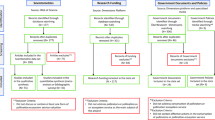Abstract
Wildlife farming is a contentious conservation measure. In Louisiana alligator farming has generated significant conservation gains. This case study is used to test several assumptions employed in debates about wildlife farming. These include whether farming ‘floods’ the market to depress prices and deter poaching, whether it encourages wild harvest and whether it can compete against wild harvest. Data from over three decades is used to model harvest behaviour with OLS and SUR models. This shows strong separation between the market between farmed and wild alligator skins. Immense rises in farmed output have not caused prices to collapse, however poaching has collapsed. This highlights that farming can have important non-price effects on poaching. Assumptions that are commonly used to debate wildlife farming are not supported in this example. Such assumptions, including open-access of the wildlife, inert and exogenous wildlife managers and excluding indirect benefits of wildlife farming tend to bias policy away from farming. Using these assumptions makes it harder to identify cases where wildlife farming could assist conservation objectives.




Similar content being viewed by others
References
Abbott B, van Kooten GC (2011) Can domestication of wildlife lead to conservation? The economics of tiger farming in China. Ecol Econ 70:721–728
Bulte EH, Damania R (2005) An economic assessment of wildlife farming and conservation. Conserv Biol 19(4):1222–1233
Damania R, Bulte E (2007) The economics of wildlife farming and endangered species conservation. Ecol Econ 62(3–4):461–472
Elsey R, Kinler N (2004) Louisiana’s alligator program: adapting management as populations recover and risk of unsustainable use decreases. In: Crocodiles, Proceedings of the 17th working meeting of the crocodile specialist group, IUCN–the world conservation union, Gland, Switzerland and Cambridge, UK, p 92–101
Elsey R and Kinler N (2006) Effects of Hurricanes Katrina and Rita on alligators (Alligator mississippiensis) in Louisiana. In: Crocodiles, Proceedings of the 18th working meeting of the crocodile specialist group, IUCN–the world conservation union, Gland, Switzerland and Cambridge, UK, p 267–279
Elsey RM, Trosclair PL, Glenn TC (2008) Nest-site fidelity in American Alligators in a Louisiana Coastal Marsh. Southeast Nat 7(4):737–743
Fischer C (2004) The complex interactions of markets for endangered species products. J Environ Econ Manage 42:926–953
Gordon HS (1954) The economic theory of a common-property resource: the fishery. J Polit Econ 62(2):124–142
Hutton J, Webb G (2003) Crocodiles: legal trade snaps back. In: Oldfield S (ed) The trade in wildlife: regulation for conservation. Earthscan Publications, London, pp 108–120
Joanen T, McNease L (1987) The management of alligators in Louisiana, USA. In: Webb GJW, Manolis C, Whitehead PJ (eds) Wildlife management: crocodiles and alligators. Surrey Beatty & Sons, Norton, pp 33–42
Liu F, McShea WJ, Garshelis DL, Zhu X, Wang D, Shao L (2011) Human-wildlife conflicts influence attitudes but not necessarily behaviors: factors driving the poaching of bears in China. Biol Conserv 144(1):538–547. doi:10.1016/j.biocon.2010.10.009
Mills J, Chan S, Ishihara A (1995) The bear facts: the East Asian market for bear gall bladder. Traffic East Asia, Cambridge
Nogueira SSC, Nogueria-Filho SLG (2011) Wildlife farming: an alternative to unsustainable hunting in Neotropical forests. Biodivers Conserv 20:1385–1397. doi:10.1007/s10531-011-0047-7
Rice KG, Percival AF, Woodward AR (1999) Effects of egg and hatchlings harvest on American Alligators in Florida. J Wildl Manage 63(4):1193–1200
Rootes WL, Chabreck RH (1993) Cannibalism in the American Alligator. Herpetologica 49(1):99–107
Subalusky AL, Fitzgerald LA, Smith LL (2009) Ontogenetic nice shifts in the American Alligator establish functional connectivity between aquatic systems. Biol Conserv 142:1507–1514
Thorbjarnarson J (1996) Reproductive characteristics of the order Crocodylia. Herpetologica 52(1):8–24
Thorbjarnarson J, Velasco A (1999) Economic incentives for management of venezuelan caiman. Conserv Biol 13(2):397–406. doi:10.1046/j.1523-1739.1999.013002397.x
Thorbjarnarson J, Wang X (2010) The Chinese alligator: ecology, behavior, conservation, and culture. The John Hopkins University, Baltimore
Acknowledgments
I would like to acknowledge the assistance of Ruth Elsey for sharing information on the alligator programme in Louisiana, Dr Lorenzo Ductor for guidance on the econometrics and Kirsten Conrad for discussions on the paper.
Author information
Authors and Affiliations
Corresponding author
Rights and permissions
About this article
Cite this article
Moyle, B. Conservation that’s more than skin-deep: alligator farming. Biodivers Conserv 22, 1663–1677 (2013). https://doi.org/10.1007/s10531-013-0501-9
Received:
Accepted:
Published:
Issue Date:
DOI: https://doi.org/10.1007/s10531-013-0501-9




